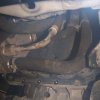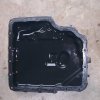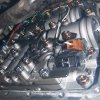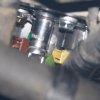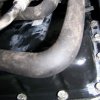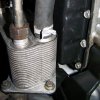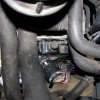Jrdinger
New Member
- Posts
- 44
- Location
- N 36.062 W 96.023
Greetings all,
I am new to the forum so I thought I would make a contribution.
My 02 Freelander recently kicked out the Good Ol' F4 code on the dash panel, and I am going to attempt fix it myself.
The day it happened, I "limped" into Land Rover Tulsa to have it checked out. After sitting around for few hours, the tech tells me that the ECU is throwing a code for the solenoid, and it would cost a cool grand ( £500 ) to fix, or it would be 3 thousand US ( £1500 ) for a rebuilt gearbox to be installed.
I subsequently purchased the parts and brought the beast back to my house for repair.
Here is the battle plan:
1. ) Easiest fix first: I have heard that by pulling the battery for a half hour and letting it sit, you can sometimes get around a repair, as the ECU might be throwing a false code. I figure it's worth a try, but not likely. The Gaylander is sitting without a battery as I type this.
2.) Go after the 2/4 shift solenoid. I understand this will be the most likely to go out... Reverse works fine, First works, and I haven't had a lock-out on the gearbox, so I think I am on the right track. The other 2/4 solenoid may be the culprit as well, but I will cross that bridge when I get there.
3.) Take it to Salt Flats up in the panhandle, and bury it, change my name so I don't have to pay the note, and pack my things and head to Mexico. Maybe trade it for a Toyota. More likely the latter.
I will include pictures as I go along, should anyone need them for reference later on. This should be at the very least interesting.
Wish me luck!
I am new to the forum so I thought I would make a contribution.
My 02 Freelander recently kicked out the Good Ol' F4 code on the dash panel, and I am going to attempt fix it myself.
The day it happened, I "limped" into Land Rover Tulsa to have it checked out. After sitting around for few hours, the tech tells me that the ECU is throwing a code for the solenoid, and it would cost a cool grand ( £500 ) to fix, or it would be 3 thousand US ( £1500 ) for a rebuilt gearbox to be installed.
I subsequently purchased the parts and brought the beast back to my house for repair.
Here is the battle plan:
1. ) Easiest fix first: I have heard that by pulling the battery for a half hour and letting it sit, you can sometimes get around a repair, as the ECU might be throwing a false code. I figure it's worth a try, but not likely. The Gaylander is sitting without a battery as I type this.
2.) Go after the 2/4 shift solenoid. I understand this will be the most likely to go out... Reverse works fine, First works, and I haven't had a lock-out on the gearbox, so I think I am on the right track. The other 2/4 solenoid may be the culprit as well, but I will cross that bridge when I get there.
3.) Take it to Salt Flats up in the panhandle, and bury it, change my name so I don't have to pay the note, and pack my things and head to Mexico. Maybe trade it for a Toyota. More likely the latter.
I will include pictures as I go along, should anyone need them for reference later on. This should be at the very least interesting.
Wish me luck!



